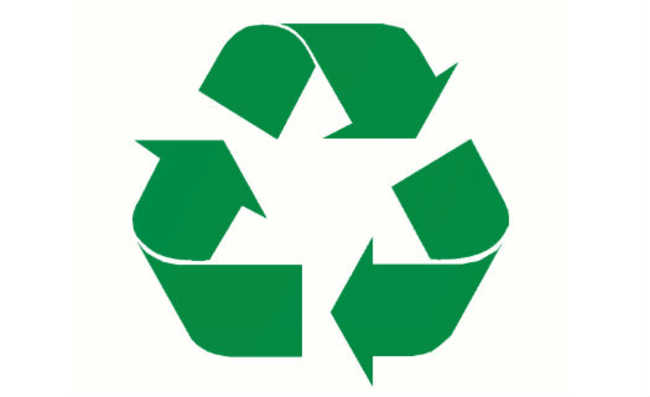What is energy recycling?
It is the process of energy recovery from waste

Photo: SRV
Energy recycling is the technology for transforming waste into thermal and/or electrical energy.
Those residues that can no longer be reused and recycled physically, biologically, or chemically, are indispensable in energy recycling, as they promote combustion. In this way, they are substitutes for diesel oil and fuel oil, which makes it possible to reduce the exploitation of non-renewable fossil fuels.
Among the residues that can be used in energy recycling are food scraps, disposable hygienic materials, plastics, among others.
However, the most viable discarded material for energy recycling is plastic. As it is derived from petroleum, plastic has a high calorific value, which makes its use in energy production feasible.
The average energy contained in a kilo of plastic, for example, has the energy power of a kilo of diesel oil!
The plastic mixtures found in landfills and urban landfills have a combustible power of around 9,000 BTUs (British thermal unit) per kilogram of waste (BTUs/kg). On the other hand, plastic materials separated by category can have a fuel value of up to 42 thousand BTU/kg of waste – a very advantageous energy value compared to dry wood, for example, which has a fuel value of up to 16 thousand BTU/kg; to coal, which has a fuel value of 24,000 BTU/kg and to refining oil, with 12,000 BTU/kg of fuel value.
How it works
Electric and/or thermal energy is obtained from the use of steam resulting from the burning of waste.
This steam moves the blades connected to a shaft (turbine). And it is this movement (kinetic energy) caused by the steam that is used to generate electrical energy. In the case of plastics, around 650 kilowatt-hours (kWh) of energy are produced per ton of waste. This is because the rotary motion produced by the coil shaft alters the flux of the magnetic field inside the generator and, with the alternation in the flux of the magnetic field, electrical energy is produced.
Thermal decomposition of plastic waste takes place in an oven at a temperature of 950°C and oxidation of the combustion gases takes place for about two seconds at more than 1000°C.
The ashes that are produced in the process can be used in civil construction.
In the process itself, there is no generation of liquid effluents, as the washing waters are neutralized and used again.
The polluting gases exhausted from the boiler are treated in the washing and gas purification system, leaving only steam and carbon monoxide in insignificant quantities.
Chemically or mechanically unrecycled plastic scrap can also be used in steel furnaces in place of pulverized coal and oil, also featuring an energy recycling.
In the world
The introduction of the first energy recycling plants (ERUs) took place in 1980, with implementation in countries such as Japan and Europe. Currently this type of technology is present in around 30 countries.
In Germany, for example, landfills were abolished, giving way to energy recycling plants (ERUs) . And in Norway there is already a shortage of solid waste for use in its ERUs, requiring imports from neighboring countries.
According to a report by the International Solid Waste Association (ISWA), the fastest growing recycling method in the world was energy, from US$ 1.5 billion in 2008 to US$ 11.5 billion in 2013
In Brazil, currently, the only URE is experimental and is located on the campus of the Federal University of Rio de Janeiro (UFRJ), the Usina Verde.
Legislation
The National Solid Waste Policy provides for energy recycling as one of the possible destinations for solid waste.
Benefits
In energy recycling, unlike other recycling processes, no prior treatment of materials is required. This characterizes energy recycling also as a cleaning method, eliminating biological agents that are harmful to health, for example.
Other advantages of ERUs are the reduced plant size and low operating noise, which allow installation in urban areas.
Thus, it becomes possible to reduce the logistical expenses that would be destined to the transport of solid waste to other regions/cities.
In addition, ERUs, despite generating harmful residues in their production, are not emitted into the environment, as explained above.
Disadvantages
Energy recycling is the most costly recycling process of all, so it should only be used when the use of other types of recycling is not feasible.
In the case of steel mills, there is still no culture of processing plastic waste, and it is necessary to create incentives for this.
Another important aspect is the guarantee of the supply of plastic scrap (more viable in terms of energy) for both steel mills and ERUs, being necessary to create a logistical structure that speeds up the collection and transport of plastic waste from the points of its generation to these plants.
Again in relation to steel mills, another disadvantage is that incineration of PVC-type plastics releases chlorine. And this, in turn, ends up being contaminated in the plant's own process and acquires corrosive potential, causing damage to pipes and burners.
Why use it?
The cumulative model of solid waste management is unsustainable and, currently, it is practically no longer viable to build sanitary landfills. What ends up happening many times is the illegal formation of landfills, unfortunately.
In this context, even though all other types of recycling (chemical, physical, biological) are used, there are still residues left over, and that is where energy recycling can act, both in ERUs and in steel mills.
Disposing of waste correctly
To properly dispose of your recyclable waste, consult the recycling stations closest to you.










